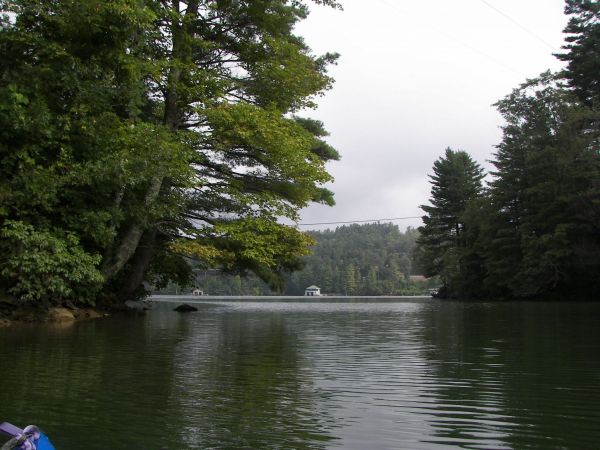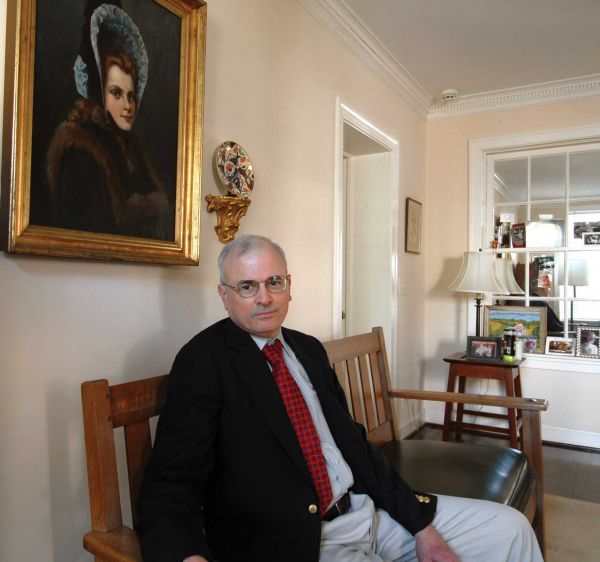Author Commentary on The Results of Polar Bear Research
 Growing up in the 1960s and 70s, I spent a lot of vacation time in the mountains of Western North Carolina. Even as a little guy, I could spend an entire afternoon paddling around a lake. White pines and tulip poplars towered over the bank. Lake Summit was such a huge place, it never felt crowded. I was always discovering new places.
Growing up in the 1960s and 70s, I spent a lot of vacation time in the mountains of Western North Carolina. Even as a little guy, I could spend an entire afternoon paddling around a lake. White pines and tulip poplars towered over the bank. Lake Summit was such a huge place, it never felt crowded. I was always discovering new places.
photos: Tom Haynie
 The environmental dynamics of lakes also interested me. For instance, a dozen streams fed Lake Summit from high up in the pristine mountains of Pisgah National Forest. Some of the streams flowed into the Green River before entering the lake. They all flowed southeast across the body of the lake, then exited through a sluice-gate below the lake, continuing the fifty-eight mile long Green River again. The water from the bottom of the lake is always cold as hell, which tubers and kayakers love.
The environmental dynamics of lakes also interested me. For instance, a dozen streams fed Lake Summit from high up in the pristine mountains of Pisgah National Forest. Some of the streams flowed into the Green River before entering the lake. They all flowed southeast across the body of the lake, then exited through a sluice-gate below the lake, continuing the fifty-eight mile long Green River again. The water from the bottom of the lake is always cold as hell, which tubers and kayakers love.
In college, Lake Summit was a great place to meet people my age, but it also led me into some hairy situations and sexual rivalries that caused me a lot of grief. Not surprisingly, I exercised poor judgment on a number of occasions. I would not have done it any other way, in hindsight.
I had never engaged a professional photographer before. My parents had used a photographer for Christmas family pictures but did not involve us children in the planning. My photographer set up his equipment, and I was self-conscious the whole time. I stood, I sat, I smiled or grimaced, and felt pretty disappointed when I saw the results. Tired out, I plopped myself on the bench in the living room. As so often happens, the photographer took one last picture, and it was the one I used for the book.
photo: Doug Deas
The Results of Polar Bear Research--Life in the Bustling Human Culture
In general, I like writers who create a social fabric with their characters. In a forward-moving society, people rub shoulders, and the ongoing relationships and spontaneous interactions tell a reader a lot about who they are. In a close setting, they confide to significant-others but no one else. A writer may direct the tale with an omniscient point of view, but he lets it unfold through the characters.
For that reason, I draw a lot of inspiration from writers like E. M. Forster, Leo Tolstoy, Bernard Malamud, and many others. Their characters sit in living rooms and talk, they attend parties and talk, they visit the race-track and talk, and they visit each other at work and do more talking. The author paints the living rooms, forests, and race-track with words. Otherwise, he keeps his artistic intervention low-key.
In writing Polar Bear, I wanted to create a social group with a lot of moving parts. I did not want mellow introverts who muse endlessly on their states of mind or wallow in a long description of their surroundings. I populated the plot with many vibrant young people who are hungry for things. They are vulnerable as hell because they have a lot on the line. The lucky ones experience the pomp and thrill of new love. Rival boys have their minds set the same girl. She has a hair-raising job of keeping their interest up, while also negotiating between them. Rivalry keeps everyone's tensions up. No one wants to miss a moment of it.
The main character John is a studious boy who compares the social scene at the lake to a polar bear mating-season. He likes a girl named Harry (short for Harriet) and she likes him, but she also like handsome, athletic Carl and the feisty risk-taker Renny. John suffers over her inattention and retaliates with awkward, passive-aggressive behavior. Often, Harry tells John things she tells no one else. John converses awkwardly, overwhelmed by his feelings. At other times, she barely tolerates his questions, as he tries to sort out the terms of their relationship, worrying he does not have one.
Again, Harry likes Carl, but the passive Carl hangs back and lets girls come to him. Renny is obtuse and unkind toward girls, even though he flirts with all of them. The boys are in Harry's face every moment, flirting with her, but she is so volatile, she cannot maintain a relationship with any of them.
In general, I do not like modern Southern fiction. It makes a decent airport read—a lot of reassuring family ties and wisteria-grade sentimentality to calm me down before a flight, if I can't have a Xanax. I don't even like classical Southern fiction—Faulkner, Eudora Welty, Thomas Wolfe, Capote, or Tennessee Williams. It cannot keep pace with vibrant social centers like Atlanta and Charlotte.
My favorite Southern work is Wise Blood, published in 1949 by Flannery O'Connor. It is ribald, surreal, extremely violent, and Southern as grits! Even today, years after reading it for the first time, I have a time trying to explain to anyone what Wise Blood is about! But it works! You finish it feeling haunted and wiser. Better than Xanax, to be sure!
The novel unfolds in backward fictional towns in Tennessee, but the film-director John Huston realized that an urban location worked better for a movie. He revealed the social potential and literary stature of Wise Blood and supported O'Connor's intentions better. So he filmed it in Macon, Georgia. In several scenes, the viewer can see the Macon Telegraph building in the distance.

